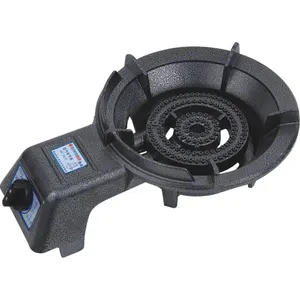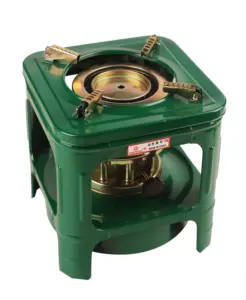In an era where modern appliances are often celebrated for their convenience and innovation, the kerosene stove stands as a testament to durability and self-reliance. This cooking apparatus, which has been a mainstay in many households worldwide, especially in regions where electricity is scarce or unreliable, operates on kerosene fuel and is prized for its portability and efficiency. Kerosene stoves have a rich history, having provided a means for cooking and heating in various settings, from remote cabins to bustling urban homes. Their ability to function independently of electrical grids makes them invaluable during power outages or in off-grid living situations.
Types of a kerosene stove
The world of kerosene stoves is diverse, with models ranging from the vintage charm of an antique kerosene stove to the practicality of an indoor kerosene stove designed for contemporary use. Collectors and enthusiasts often seek after antique kerosene stoves for their intricate designs and historical value. These stoves can be found with ornate metalwork and enamel finishes, reminiscent of a bygone era. On the other hand, modern indoor kerosene stoves are built with functionality in mind, offering features such as adjustable flame control, built-in safety mechanisms, and improved fuel efficiency. Pressure kerosene stoves use a pressurized fuel tank to atomize the kerosene and create a powerful, blue flame. These stoves are more efficient and produce higher heat output. Multi-burner kerosene stoves feature multiple burners or cooking surfaces that allow for simultaneous cooking of multiple dishes. These stoves are commonly used in commercial kitchens, restaurants, or large households where cooking for a large group of people is required. Portable kerosene stoves are compact, lightweight, and designed for easy transport and storage. These stoves are ideal for outdoor activities, camping, picnics, or as a backup cooking solution during power outages. Kerosene stoves have their unique attributes, catering to different preferences and requirements, whether it's for daily cooking needs or as a collector's item with practical use.
Materials and advantages of a kerosene stove
When examining a kerosene stove, the materials used in its construction are as important as its design. For example, an antique 3-burner kerosene stove typically features robust materials like cast iron or steel, which not only contribute to the stove's longevity but also its ability to retain and distribute heat effectively. The use of such materials ensures that the stove can withstand the rigors of frequent use while providing consistent cooking performance. The glass used in these stoves is usually tempered for heat resistance and safety. In some kerosene stoves, ceramic components may be used for insulation or heat retention. Ceramic materials can help distribute heat evenly and prevent the stove from getting too hot to touch. A brass kerosene stove, with its excellent heat conductivity and resistance to corrosion, is particularly well-suited for outdoor use, such as camping or fishing trips, where it can provide a trustworthy cooking source in the absence of traditional facilities. These materials add a touch of elegance and style to the stove while also providing durability and corrosion resistance. Kerosene stoves may also contain insulation materials to prevent heat loss and improve fuel efficiency. Some kerosene stoves feature a glass window or panel that allows the user to monitor the flame and fuel level.
The advantages of using a kerosene stove are numerous, including their energy efficiency, the ability to operate without electricity, and their portability. A kerosene stove, with its multiple burners, allows for the preparation of several dishes simultaneously, making it a practical choice for larger meals or when cooking for many people. Additionally,
antique kerosene stove parts are often interchangeable, which means that these stoves can be maintained and repaired to extend their lifespan, further highlighting their sustainability and practicality in various settings. These stoves continue to serve as versatile tools for cooking and heating and even as an emergency resource when other options are unavailable. As an alternative to gas and electric stoves, kerosene stoves present a viable solution for those seeking a more adaptable and cost-effective cooking method.










































 浙公网安备 33010002000092号
浙公网安备 33010002000092号 浙B2-20120091-4
浙B2-20120091-4